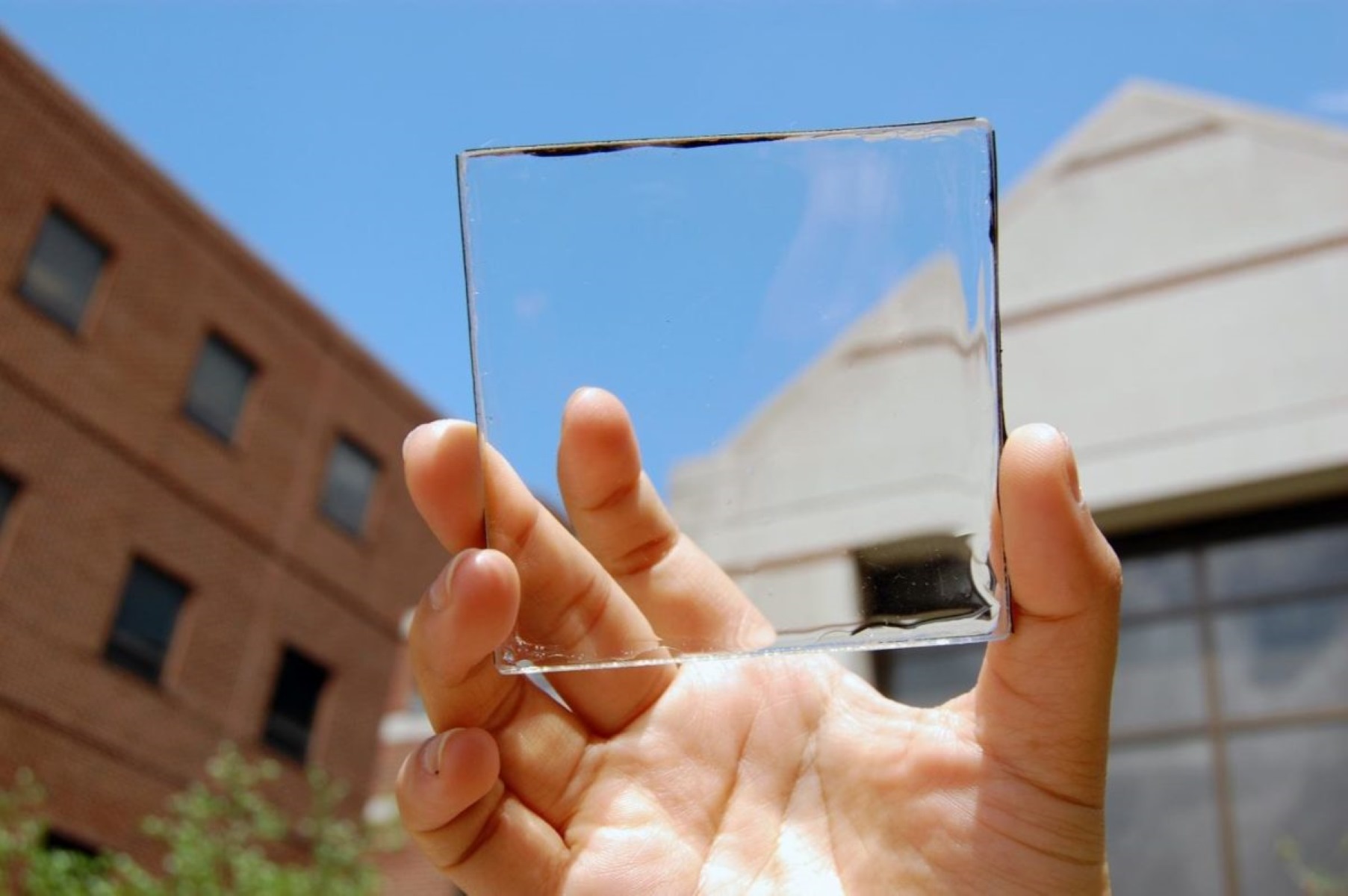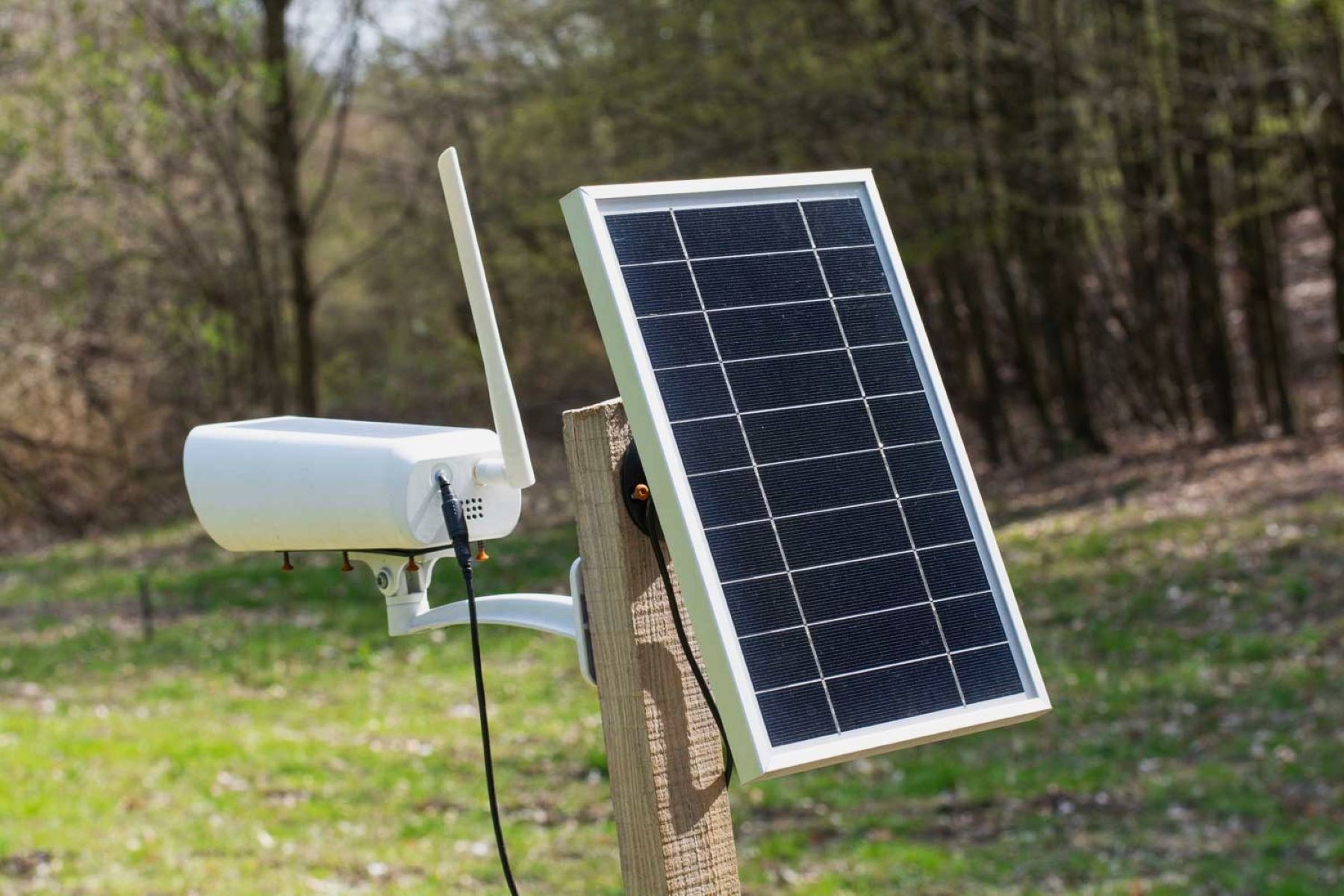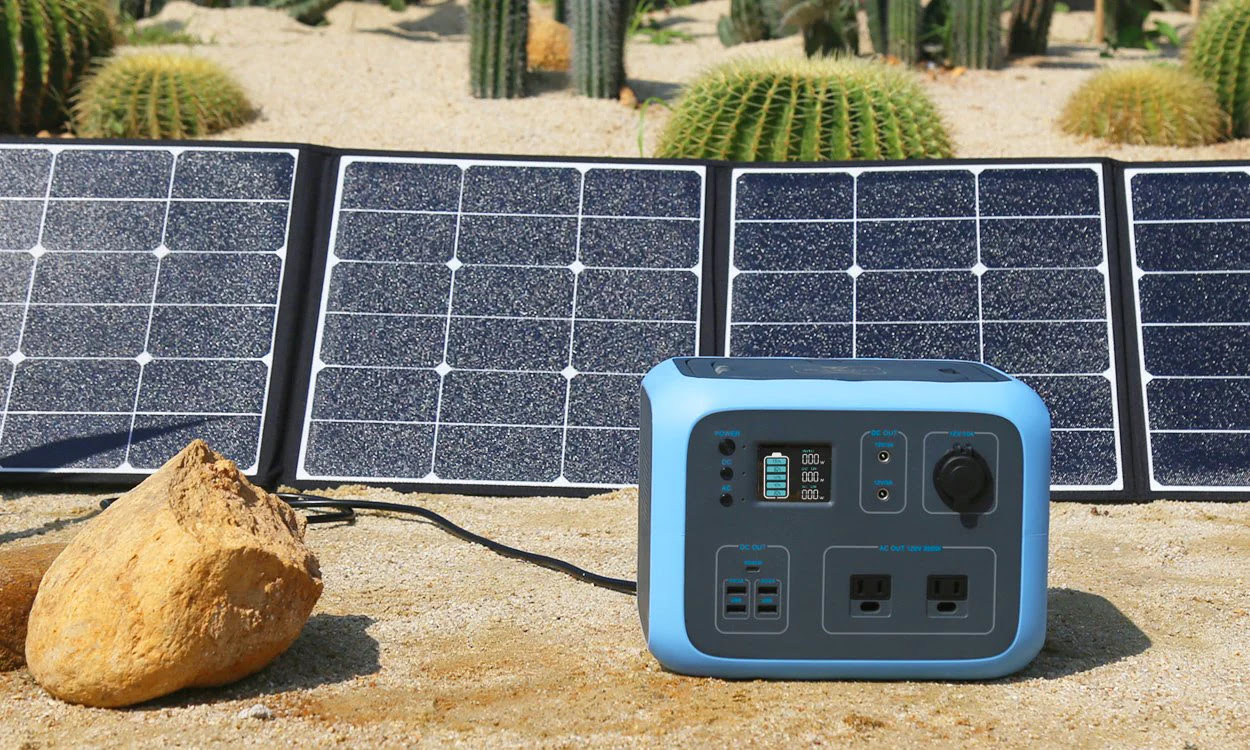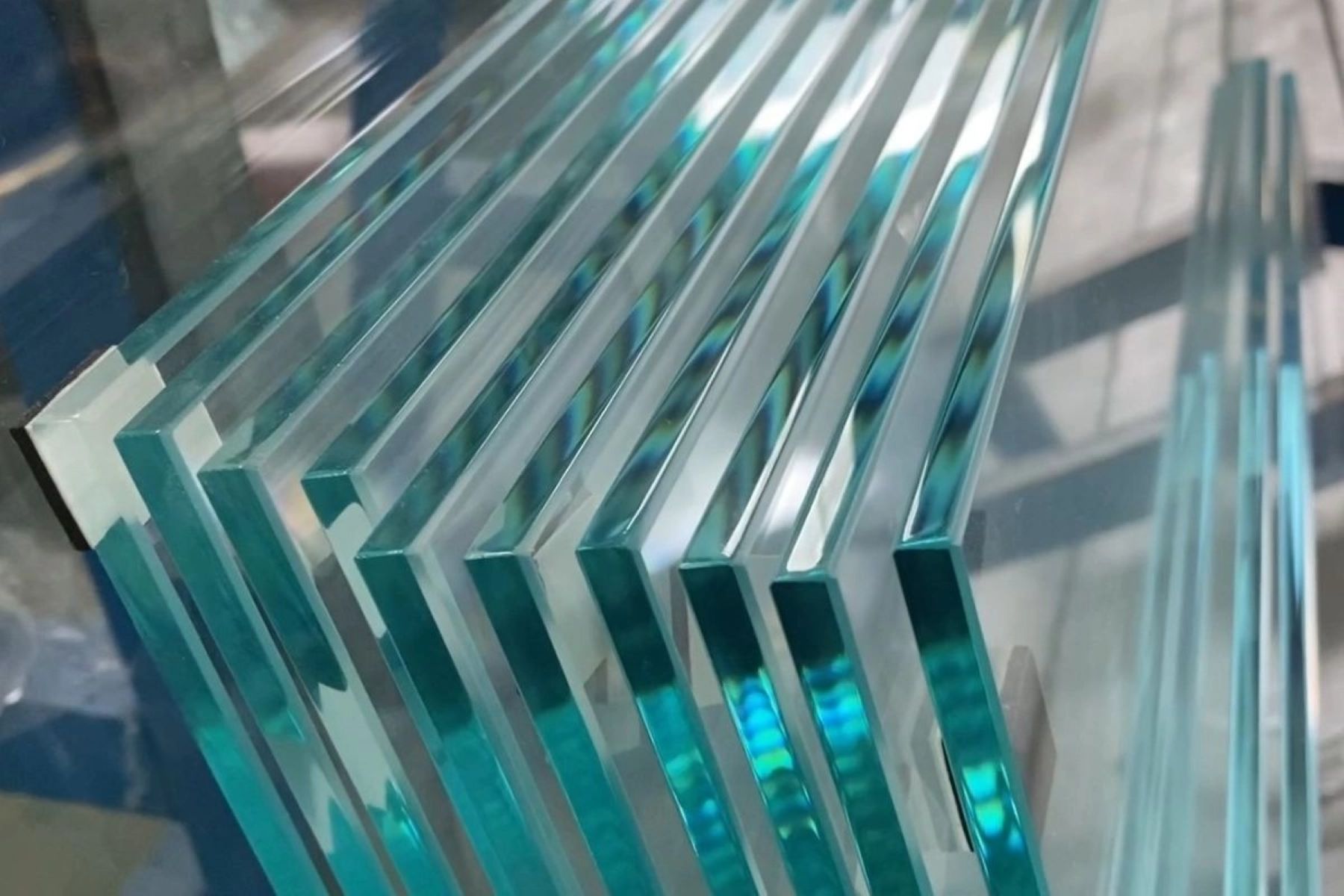Home>Furniture & Design>Interior Design Trends>What Is Solar Glass


Interior Design Trends
What Is Solar Glass
Published: February 5, 2024
Discover the latest interior design trends with solar glass, a sustainable and stylish solution for modern homes. Learn how solar glass can enhance natural light and energy efficiency in your living space.
(Many of the links in this article redirect to a specific reviewed product. Your purchase of these products through affiliate links helps to generate commission for Storables.com, at no extra cost. Learn more)
Introduction
Solar glass is a cutting-edge innovation that has revolutionized the renewable energy sector. This specialized glass plays a pivotal role in harnessing solar energy and converting it into electricity, making it an integral component of solar panels and photovoltaic systems. With its unique properties and versatile applications, solar glass has emerged as a game-changer in sustainable energy solutions.
The utilization of solar glass has gained significant traction in recent years, driven by the escalating global demand for clean and renewable energy sources. Its widespread adoption has propelled advancements in solar technology, paving the way for more efficient and eco-friendly energy generation. As the world continues to prioritize environmental sustainability, the significance of solar glass in the renewable energy landscape cannot be overstated.
This article delves into the intricacies of solar glass, exploring its definition, diverse types, key properties, applications across various industries, as well as its advantages and disadvantages. By unraveling the multifaceted nature of solar glass, we aim to provide a comprehensive understanding of this innovative material and its profound impact on the renewable energy sector.
Key Takeaways:
- Solar glass is a special type of glass that helps turn sunlight into electricity, making it a crucial part of solar panels. It’s durable, transparent, and can be used in many cool ways, like in buildings and even on vehicles!
- While solar glass has many benefits, like making clean energy and looking cool, it also has some challenges, such as being heavy and needing careful handling. But scientists are working hard to make it even better for the future!
Read more: What Is Solar Air Heating
Definition of Solar Glass
Solar glass, also known as photovoltaic glass or solar panel glass, is a specialized type of glass designed to optimize the conversion of solar energy into electricity. It serves as the outermost layer of solar panels, facilitating the absorption of sunlight and the subsequent generation of electrical power through photovoltaic processes. This innovative glass is engineered to exhibit exceptional transparency, durability, and light-trapping properties, enabling it to efficiently capture and harness solar radiation for sustainable energy production.
The composition of solar glass typically involves the integration of advanced materials and coatings that enhance its light-transmitting capabilities while minimizing reflection and absorption losses. This unique construction allows solar glass to maximize the exposure of solar cells to sunlight, thereby optimizing energy conversion efficiency. Furthermore, solar glass is engineered to withstand environmental factors such as temperature variations, moisture, and mechanical stress, ensuring long-term reliability and performance in diverse climatic conditions.
In essence, solar glass acts as a crucial interface between the sun's radiant energy and the underlying photovoltaic cells, enabling the seamless conversion of sunlight into electrical power. Its specialized design and optical properties enable the efficient capture and utilization of solar radiation, making it an indispensable component of solar energy systems. By harnessing the principles of photovoltaics, solar glass plays a pivotal role in driving the sustainable generation of clean electricity, contributing to the global transition towards renewable energy sources.
The evolution of solar glass technology has led to continuous advancements in its design and functionality, resulting in enhanced energy yield and cost-effectiveness in solar panel installations. As the demand for solar energy continues to surge, the significance of solar glass in enabling efficient energy conversion and sustainable power generation becomes increasingly pronounced. With its fundamental role in the photovoltaic process, solar glass stands as a cornerstone of modern solar technology, embodying the convergence of innovation and environmental stewardship.
Types of Solar Glass
1. Transparent Conductive Oxide (TCO) Coated Glass
Transparent Conductive Oxide (TCO) coated glass represents a prevalent type of solar glass renowned for its exceptional light-transmitting properties and electrical conductivity. This specialized glass variant is engineered with a thin layer of transparent conductive oxide, typically indium tin oxide (ITO) or fluorine-doped tin oxide (FTO), which facilitates the efficient transmission of sunlight while enabling the passage of electrical current. TCO-coated solar glass is widely utilized in photovoltaic applications, where its high transparency and low electrical resistance contribute to enhanced energy conversion efficiency.
2. Anti-Reflective Coated Glass
Anti-reflective coated glass is designed to mitigate reflection losses and optimize light absorption in solar panels. By incorporating nanostructured coatings or thin films with tailored refractive indices, this type of solar glass minimizes surface reflections, allowing a greater proportion of incident sunlight to penetrate the glass and reach the underlying solar cells. The anti-reflective properties of this glass variant significantly enhance the overall light-capturing capabilities of solar panels, thereby bolstering their energy yield and performance.
3. Tempered Solar Glass
Tempered solar glass is engineered to exhibit exceptional strength, durability, and resistance to mechanical stress, making it an ideal choice for solar panel applications. Through a specialized tempering process involving rapid cooling, tempered solar glass acquires heightened structural integrity and impact resistance, ensuring its ability to withstand environmental factors and physical loads. This type of solar glass offers enhanced safety and reliability in solar installations, contributing to the long-term functionality and robustness of photovoltaic systems.
4. Bifacial Solar Glass
Bifacial solar glass represents an innovative variation that enables the absorption of sunlight from both the front and rear surfaces, maximizing energy capture and conversion. This dual-sided glass design allows for the utilization of reflected and diffused light, enhancing the overall power output of solar panels. Bifacial solar glass holds immense potential for enhancing energy yield in diverse environmental conditions, making it a compelling choice for solar projects seeking to optimize performance and efficiency.
5. Textured Solar Glass
Textured solar glass features a surface microstructure that promotes light trapping and improved optical absorption, thereby augmenting the efficiency of solar cells. The textured surface of this glass variant facilitates the scattering and retention of incident sunlight within the solar panel, increasing the likelihood of photon absorption by the photovoltaic cells. By enhancing light management and photon capture, textured solar glass contributes to heightened energy conversion and overall solar panel performance.
6. Colored Solar Glass
Colored solar glass introduces aesthetic and design versatility to solar panel applications, offering a range of hues and tints while maintaining essential photovoltaic functionality. This type of solar glass enables architectural integration and customization, allowing solar panels to blend seamlessly with building facades and structures. Colored solar glass presents opportunities for creative solar installations in urban environments, where aesthetic appeal and design considerations converge with sustainable energy generation.
The diverse array of solar glass types underscores the multifaceted nature of this innovative material, catering to a spectrum of technical, aesthetic, and performance requirements in solar energy systems. Each variant of solar glass embodies distinct characteristics and functionalities, contributing to the advancement and diversification of solar technology across various applications and industries.
Properties of Solar Glass
Solar glass exhibits a diverse range of properties that collectively contribute to its pivotal role in solar energy applications. These properties encompass optical, mechanical, and functional characteristics, underscoring the unique attributes that define the performance and reliability of solar glass in photovoltaic systems.
1. High Transparency
Solar glass is engineered to possess exceptional optical transparency, allowing for the efficient transmission of sunlight to the underlying photovoltaic cells. This high level of transparency enables maximum light penetration, optimizing the utilization of solar radiation for electricity generation. By minimizing light attenuation and internal reflection, solar glass enhances the overall energy conversion efficiency of solar panels.
2. Low Iron Content
The low iron content of solar glass is a critical attribute that contributes to its optical clarity and light-transmitting capabilities. By minimizing the presence of iron oxide impurities, solar glass maintains a high degree of spectral neutrality, ensuring minimal color distortion and improved light transmission. This property is essential for maximizing the energy yield of solar panels by mitigating optical losses and enhancing the absorption of sunlight.
3. Enhanced Durability
Solar glass is characterized by its exceptional durability and mechanical strength, enabling it to withstand environmental stressors and maintain long-term performance. Through specialized tempering processes and material enhancements, solar glass exhibits robust resistance to impact, thermal fluctuations, and weathering, ensuring its reliability in diverse climatic conditions. This durability is instrumental in the longevity and functionality of solar panels, contributing to their sustained energy production over extended operational lifespans.
Read more: What Is The Best Solar Attic Fan
4. Anti-Reflective Coating
Many variants of solar glass feature anti-reflective coatings that minimize surface reflections and enhance light absorption. These coatings are designed to reduce the loss of incident sunlight due to reflection, thereby increasing the overall energy capture efficiency of solar panels. By promoting greater light transmittance and minimizing optical losses, the anti-reflective properties of solar glass contribute to heightened energy yield and performance.
5. Electrical Conductivity
Certain types of solar glass incorporate transparent conductive oxide (TCO) coatings, facilitating electrical conductivity while maintaining optical transparency. This property enables the efficient extraction and conduction of electrical current generated by the photovoltaic cells, contributing to the seamless integration of solar glass within the electrical circuitry of solar panels. The combination of high electrical conductivity and optical transparency enhances the overall functionality and energy conversion efficiency of solar glass.
6. Tailored Surface Textures
Textured solar glass is engineered with surface microstructures that promote light trapping and improved optical absorption. These tailored surface textures facilitate the scattering and retention of incident sunlight within the solar panel, enhancing the likelihood of photon absorption by the photovoltaic cells. By optimizing light management and photon capture, textured solar glass augments energy conversion efficiency and overall solar panel performance.
7. Customizable Aesthetics
Colored solar glass offers customizable aesthetic options, allowing for architectural integration and design versatility in solar panel installations. This property enables the seamless incorporation of solar panels into diverse building facades and urban environments, aligning with aesthetic and design considerations while maintaining essential photovoltaic functionality. Colored solar glass presents opportunities for creative and visually appealing solar installations, expanding the scope of architectural and renewable energy integration.
The collective embodiment of these properties underscores the multifaceted nature of solar glass, positioning it as a fundamental component in the sustainable harnessing of solar energy. By integrating advanced optical, mechanical, and functional attributes, solar glass exemplifies the convergence of innovation and performance in driving the global transition towards renewable energy solutions.
Applications of Solar Glass
Solar glass finds diverse and impactful applications across a spectrum of industries, leveraging its unique properties to drive sustainable energy solutions and innovative technological advancements. The versatile nature of solar glass enables its integration into various systems and structures, fostering the widespread adoption of solar energy across residential, commercial, and industrial domains.
1. Solar Photovoltaic (PV) Modules
Solar glass serves as the outer protective layer for solar photovoltaic modules, encapsulating and safeguarding the photovoltaic cells while facilitating the transmission of sunlight for energy conversion. Its high transparency, durability, and anti-reflective properties make it an indispensable component in solar panel manufacturing, enabling the efficient generation of electricity from solar radiation.
2. Building-Integrated Photovoltaics (BIPV)
In architectural and construction applications, solar glass is integrated into building facades, skylights, and windows to create building-integrated photovoltaic systems. This innovative approach seamlessly incorporates solar energy generation into the built environment, offering sustainable power generation while enhancing the aesthetic appeal and energy efficiency of structures.
3. Solar Greenhouses
Solar glass is utilized in the construction of solar greenhouses, where it serves as the glazing material to optimize light transmission for plant growth while simultaneously harnessing solar energy for heating and electricity generation. This application underscores the dual functionality of solar glass in supporting agricultural practices and renewable energy utilization.
4. Solar Vehicles
The integration of solar glass in the design of solar-powered vehicles, including cars, buses, and boats, enables the utilization of sunlight for auxiliary power generation. Solar glass panels integrated into vehicle surfaces contribute to supplementary energy supply, reducing reliance on traditional fuel sources and advancing sustainable transportation solutions.
5. Solar Charging Stations
Solar glass is employed in the construction of solar charging stations for electric vehicles and portable electronic devices. These charging stations utilize solar glass panels to harness sunlight and convert it into electrical power, offering convenient and eco-friendly charging solutions for electric vehicles and mobile devices.
6. Solar Canopies and Shading Structures
Solar glass is incorporated into solar canopies and shading structures, providing dual benefits of shelter and renewable energy generation. These installations offer shaded areas for outdoor spaces while simultaneously capturing solar energy, demonstrating the versatility of solar glass in architectural and urban design applications.
7. Off-Grid Solar Systems
In off-grid and remote locations, solar glass is utilized in standalone solar power systems to generate electricity for residential, agricultural, and industrial purposes. These systems leverage solar glass panels to harness sunlight and produce sustainable power, offering reliable energy solutions in areas without access to traditional grid infrastructure.
8. Solar Water Heating Systems
Solar glass is integrated into solar thermal collectors for water heating applications, where it facilitates the absorption of solar radiation to heat water for residential and commercial use. This application underscores the utilization of solar glass in promoting energy-efficient water heating solutions, contributing to reduced reliance on conventional energy sources.
The diverse applications of solar glass underscore its pivotal role in advancing renewable energy utilization across a myriad of sectors, exemplifying its capacity to drive sustainable innovation and environmental stewardship. As the demand for clean energy solutions continues to escalate, the integration of solar glass across diverse applications underscores its significance in shaping a more sustainable and energy-efficient future.
Advantages of Solar Glass
Solar glass offers a myriad of advantages that underscore its pivotal role in advancing renewable energy solutions and sustainable technology. These advantages encompass its unique properties, versatile applications, and profound impact on energy generation and environmental conservation.
-
Efficient Energy Conversion: Solar glass facilitates the seamless conversion of solar radiation into electricity, leveraging its high transparency and light-trapping properties to optimize energy yield. By enabling the absorption and utilization of sunlight for power generation, solar glass contributes to the efficient harnessing of renewable energy resources.
-
Enhanced Durability: The exceptional durability of solar glass ensures long-term reliability and performance in diverse environmental conditions. Its resistance to mechanical stress, thermal fluctuations, and weathering enhances the longevity of solar panels, contributing to sustained energy production over extended operational lifespans.
-
Architectural Integration: Solar glass enables seamless integration into building structures, offering aesthetic appeal and design versatility in architectural applications. This integration aligns with sustainable building practices, allowing for the incorporation of solar energy generation while enhancing the visual and functional aspects of urban environments.
-
Diverse Applications: The versatility of solar glass extends to a wide range of applications, including solar photovoltaic modules, building-integrated photovoltaics, solar greenhouses, and solar vehicles. Its adaptability across diverse industries underscores its capacity to drive sustainable innovation and energy-efficient solutions.
-
Sustainable Energy Generation: By harnessing solar energy, solar glass contributes to the reduction of greenhouse gas emissions and reliance on non-renewable energy sources. Its role in sustainable energy generation aligns with global efforts to mitigate climate change and promote environmental sustainability.
-
Cost-Effective Solutions: The utilization of solar glass in solar panel manufacturing and renewable energy systems offers cost-effective solutions for clean electricity generation. Its contribution to lowering operational costs and enhancing energy efficiency underscores its economic viability in the renewable energy sector.
-
Technological Advancements: The continuous evolution of solar glass technology has led to enhanced energy conversion efficiency and performance in solar panel installations. Ongoing advancements in solar glass design and functionality contribute to the progression of solar technology and the optimization of energy generation.
-
Environmental Stewardship: Solar glass embodies a commitment to environmental stewardship by enabling the utilization of clean and renewable energy sources. Its role in driving sustainable energy solutions aligns with the global imperative to transition towards low-carbon and eco-friendly energy alternatives.
The collective embodiment of these advantages underscores the transformative impact of solar glass in shaping the renewable energy landscape and fostering a more sustainable and energy-efficient future. As the demand for clean energy solutions continues to escalate, the intrinsic benefits of solar glass position it as a cornerstone of sustainable energy generation and environmental conservation.
Disadvantages of Solar Glass
While solar glass offers a multitude of advantages in the realm of renewable energy, it is important to acknowledge certain limitations and challenges associated with its utilization.
-
Cost Considerations: The production of high-quality solar glass involves advanced manufacturing processes and specialized materials, contributing to relatively higher production costs. This cost factor can pose a barrier to widespread adoption, particularly in contexts where budget constraints may limit the feasibility of large-scale solar panel installations.
-
Fragility and Maintenance: Despite advancements in durability, solar glass remains susceptible to potential damage from external impacts and environmental factors. The fragility of solar glass panels necessitates careful handling during installation and ongoing maintenance to mitigate the risk of breakage or performance degradation over time.
-
Weight and Structural Requirements: Solar glass panels are inherently heavy, requiring robust support structures and installation frameworks to ensure structural integrity and safety. The weight of solar glass can present logistical challenges in certain applications, necessitating careful engineering and construction considerations to accommodate the load-bearing requirements.
-
Limited Energy Conversion Efficiency: While solar glass continues to undergo technological advancements to enhance energy conversion efficiency, inherent limitations in photon capture and conversion processes may impact overall energy yield. Factors such as light reflection, spectral losses, and temperature sensitivity can influence the performance of solar glass panels, necessitating ongoing research and development to optimize efficiency.
-
Environmental Impact of Production: The manufacturing processes involved in producing solar glass, including the extraction of raw materials and energy-intensive fabrication methods, may entail environmental implications. These processes can contribute to carbon emissions and resource utilization, highlighting the importance of sustainable practices and lifecycle assessments in solar glass production.
-
Geographical and Climatic Dependencies: The effectiveness of solar glass in harnessing solar energy is contingent on geographical location and climatic conditions. Variations in sunlight exposure, cloud cover, and seasonal changes can influence the energy generation potential of solar glass panels, posing challenges in regions with limited solar irradiance.
-
Technological Obsolescence: The rapid pace of technological innovation in the renewable energy sector may lead to potential obsolescence of solar glass technologies. Ongoing advancements in solar panel design and materials could render existing solar glass solutions less competitive or outdated, necessitating continual adaptation to emerging industry standards.
While these disadvantages underscore the complexities and considerations associated with solar glass utilization, they also present opportunities for ongoing research, innovation, and strategic planning to address these challenges. By acknowledging these limitations, the renewable energy industry can work towards mitigating the drawbacks of solar glass while maximizing its potential as a sustainable energy solution.
Conclusion
In conclusion, solar glass stands as a transformative innovation that has redefined the landscape of renewable energy generation. Its unique properties, diverse applications, and intrinsic advantages position it as a cornerstone of sustainable technology, driving the global transition towards clean and eco-friendly energy solutions. The evolution of solar glass technology has propelled advancements in solar panel efficiency, architectural integration, and energy generation, underscoring its profound impact on the renewable energy sector.
The multifaceted nature of solar glass, encompassing high transparency, durability, and architectural versatility, underscores its pivotal role in shaping the built environment and urban infrastructure. From building-integrated photovoltaics to solar greenhouses and solar charging stations, the integration of solar glass across diverse applications exemplifies its capacity to harmonize energy generation with architectural design and environmental sustainability.
Furthermore, the advantages of solar glass, including efficient energy conversion, enhanced durability, and cost-effective solutions, underscore its potential to drive widespread adoption and contribute to the global imperative of mitigating climate change. By harnessing solar energy and reducing reliance on non-renewable resources, solar glass embodies a commitment to environmental stewardship and the pursuit of a more sustainable and resilient energy future.
While acknowledging the challenges and limitations associated with solar glass, such as production costs, fragility, and geographical dependencies, it is imperative to recognize these aspects as opportunities for continued innovation and strategic development. The ongoing evolution of solar glass technology, coupled with sustainable manufacturing practices and research-driven advancements, holds the promise of addressing these challenges and further enhancing the efficacy of solar glass in renewable energy applications.
As the demand for clean energy solutions continues to escalate, the significance of solar glass in driving sustainable innovation and environmental conservation cannot be overstated. Its role in advancing renewable energy utilization, architectural integration, and technological progress underscores its enduring relevance in shaping a more resilient and energy-efficient future for generations to come. With ongoing advancements and strategic initiatives, solar glass is poised to continue its transformative impact, contributing to a more sustainable and harmonious coexistence with our planet.
Frequently Asked Questions about What Is Solar Glass
Was this page helpful?
At Storables.com, we guarantee accurate and reliable information. Our content, validated by Expert Board Contributors, is crafted following stringent Editorial Policies. We're committed to providing you with well-researched, expert-backed insights for all your informational needs.










0 thoughts on “What Is Solar Glass”